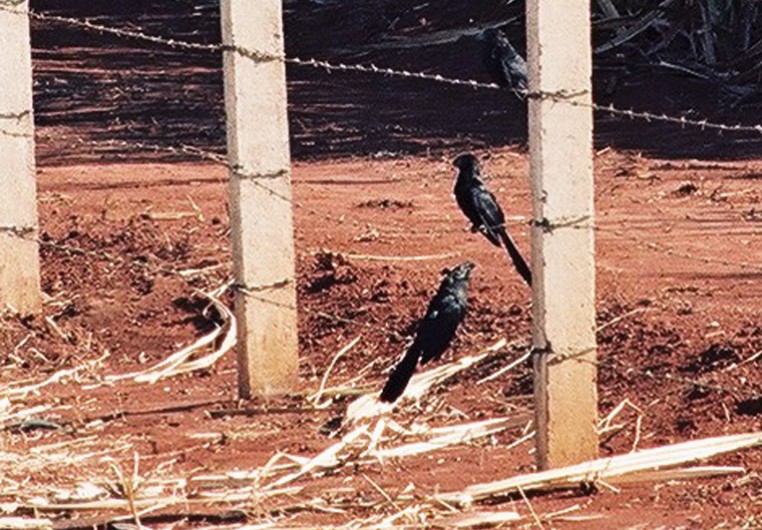Biodiversity
 Smooth-billed ani
Crotophaga ani | Linnaeus, 1758
Smooth-billed ani
Crotophaga ani | Linnaeus, 1758

Characterization: Medium-size species measuring about 36cm in length. This bird has a uniform black plumage, with a high, strong, and short beak and a long, graded tail. Its body odor is strong and distinctive, noticeable several meters away and capable of attracting vampire bats and carnivores.
Distribution: From Florida to Argentina and throughout Brazil.
Habitat: Pastures, fields, gardens, abandoned fields and other open areas.
Habits: Diurnal and extremely sociable, it forms couples and always lives in flocks, which come together at night in tight rows or cluster in disorderly heaps, occupying collective territories throughout the year
Diet: Essentially carnivorous, feeding on grasshoppers, barnacles, spiders, millipedes, hairy and stinging caterpillars, lizards, small snakes, frogs or mice. But this bird may also eat fruits, berries, coconuts, and seeds, especially in the dry season when there is a shortage of arthropods.
Breeding: It lays 4 to 7 eggs in collective nests shaped as a large, open cup. A nest may be occupied by 6 or 10 birds and have 10, 20 or even more eggs.
In the UFRA area: The smooth-billed ani has an abundant spatial distribution. It was seen in all studied areas, such as organic sugarcane fields, exotic forests, wetlands with herbaceous plants, wetlands with riparian forests, restored native forests, mixed forests in regeneration, native forests, drainage ditches, forests in spontaneous regeneration, and in fields in spontaneous regeneration. It is the second most common species of the San Francisco Sugarmill areas, and it was spotted 149 times.



